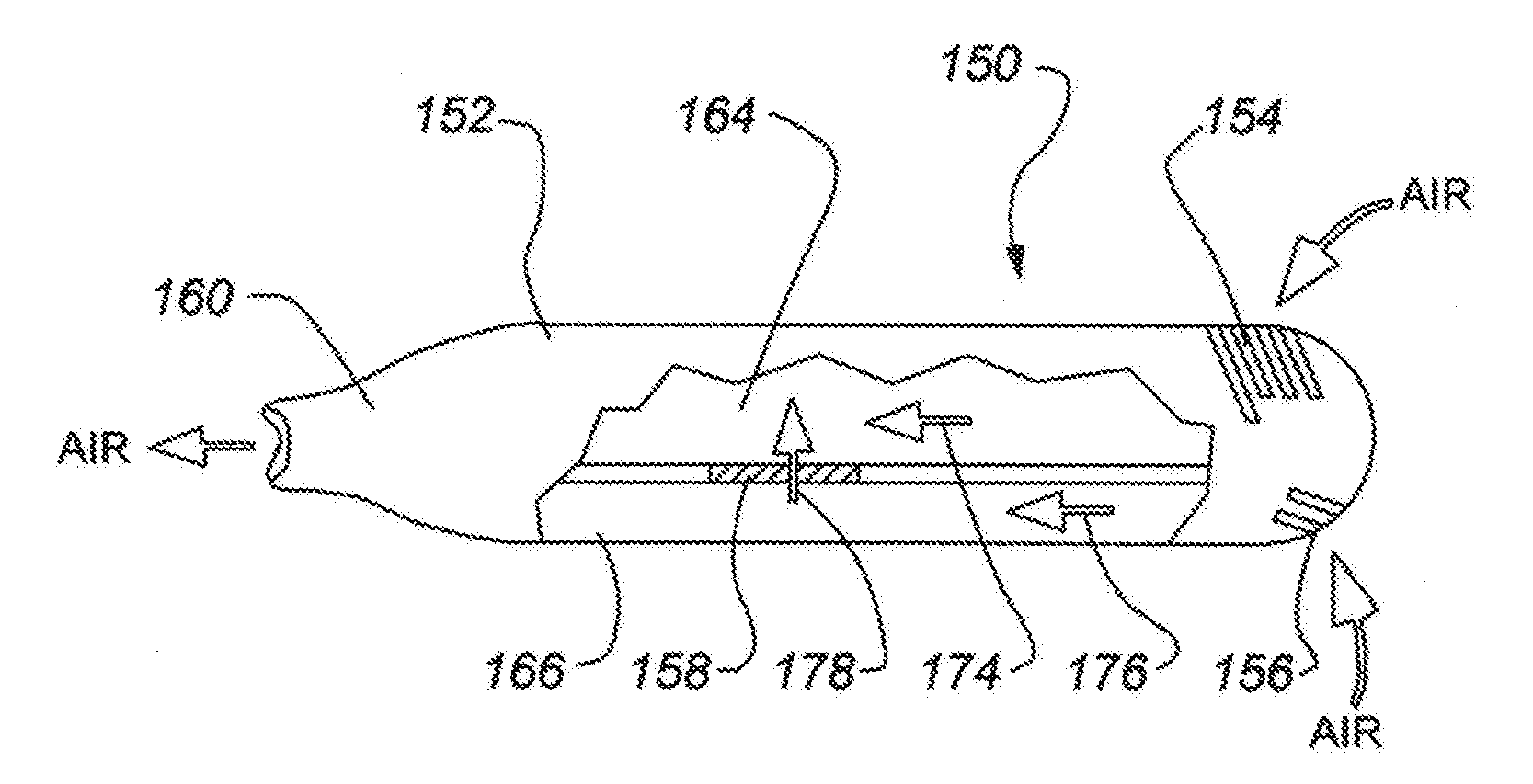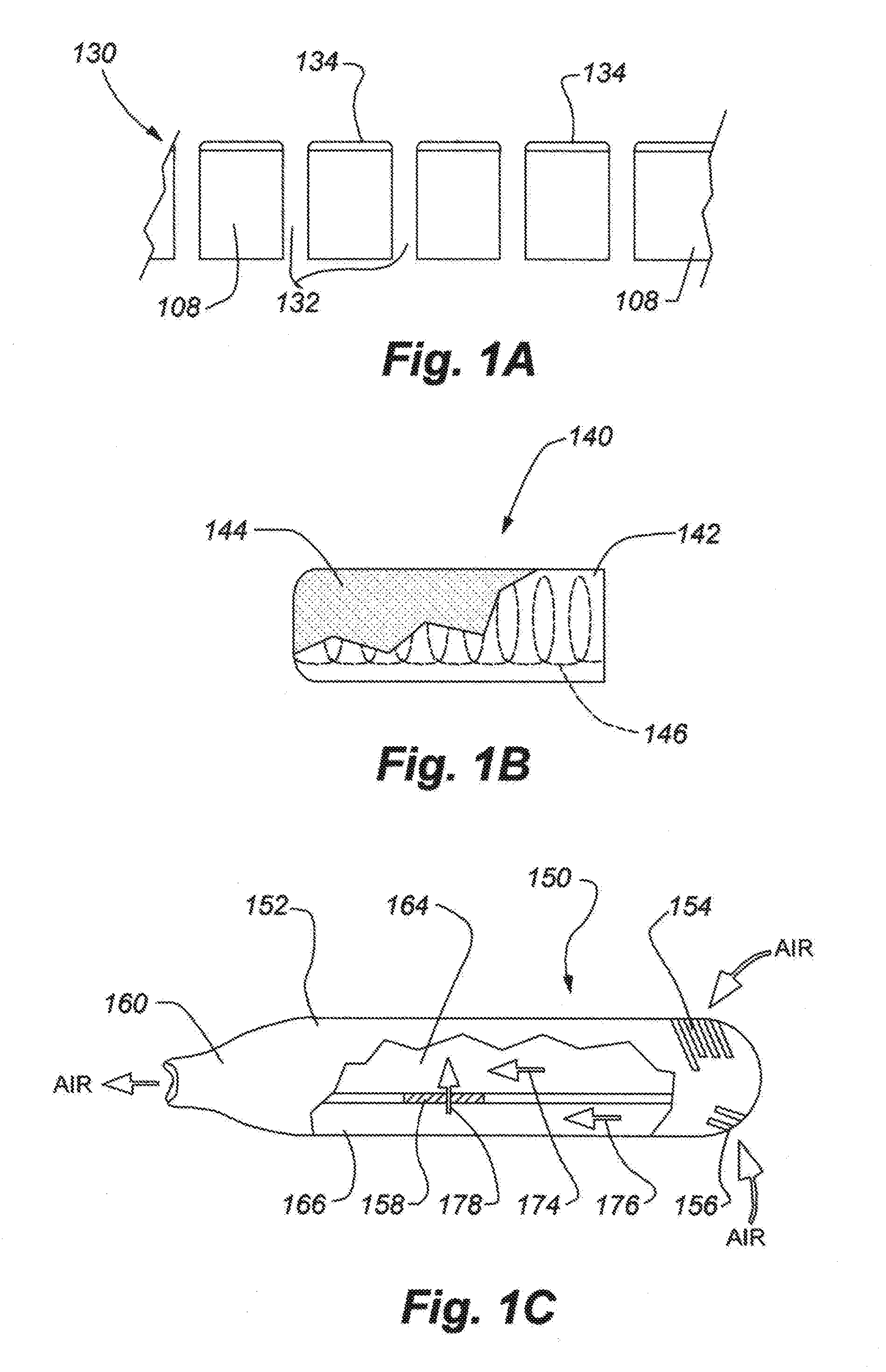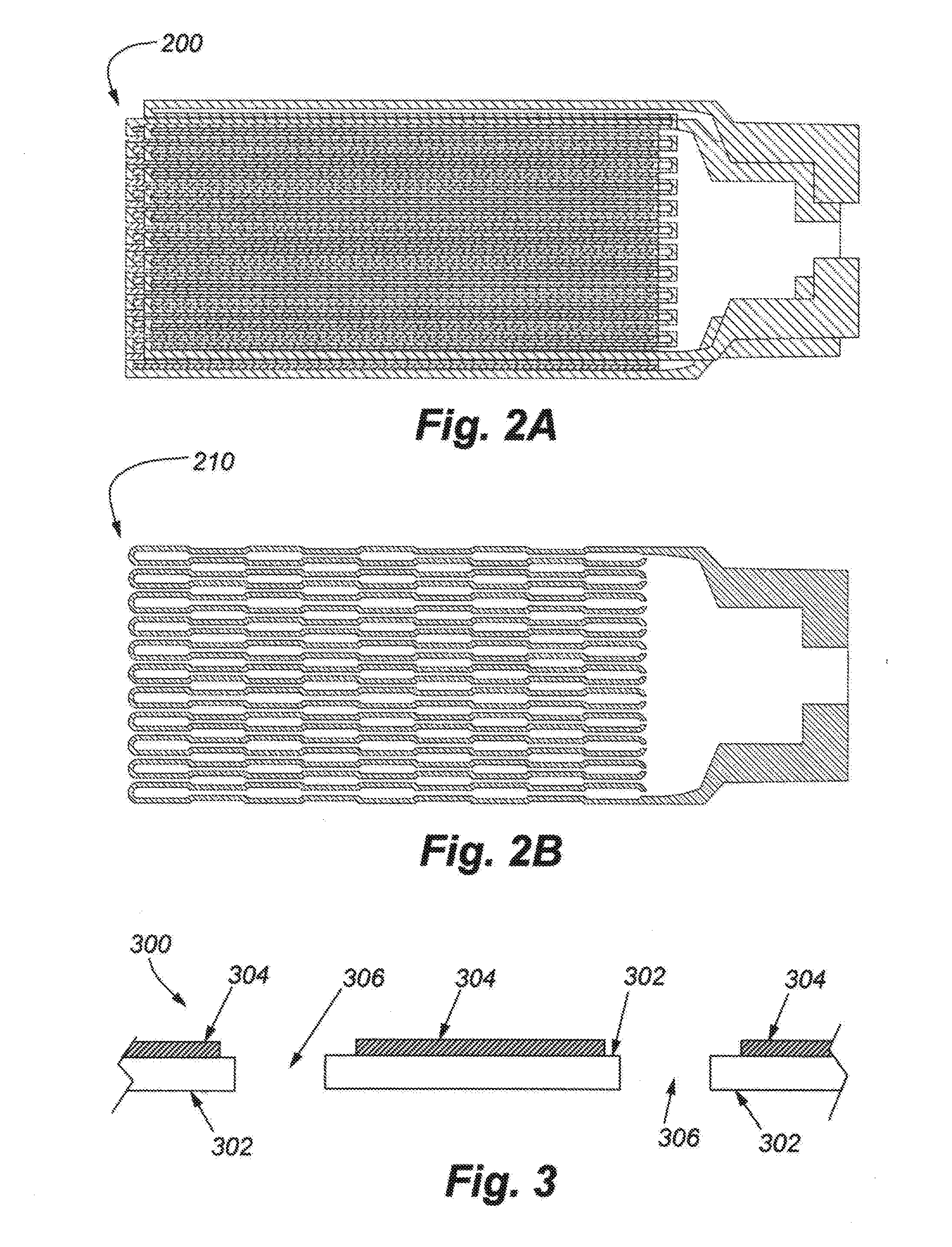Heating unit for use in a drug delivery device
a heating unit and drug technology, applied in the direction of aerosol delivery, heterocyclic compound active ingredients, other medical devices, etc., can solve the problems of poor patient compliance, inability to achieve systemic delivery of aerosol particles, and inability to meet patient requirements
- Summary
- Abstract
- Description
- Claims
- Application Information
AI Technical Summary
Benefits of technology
Problems solved by technology
Method used
Image
Examples
example 1
[0144]Loperamide and flunisolide condensation aerosols were produced by the substrate screening apparatus using 304 stainless steel perforated substrates having the % porosities, hole spacings, and hole diameters shown in Table 1. The substrates were spray-coated with loperamide free base or flunisolide free base at coating densities of 0.3 mg / cm2 and 0.4 mg / cm2, respectively. Air flow ratios (across:bottom) of 23:5 and 18:10 were evaluated. The substrate was rapidly heated to approximately 400° C. for loperamide and approximately 375° C. for flunisolide.
TABLE 1Characteristics of Perforated 304 Stainless Steel SubstratesSubstrate #Hole DiameterHole Spacing% Porosity10.005″0.015″520.005″0.009″1030.005″0.005″2040.010″0.03″550.010″0.018″1060.010″0.010″2070.010″0.004″4080.020″0.059″590.020″0.036″10100.020″0.020″20110.020″0.008″40120.040″0.118″5130.040″0.016″40
[0145]Aerosol purity results for loperamide aerosolized from perforated 304 stainless steel substrates at an across:bottom air fl...
example 2
[0150]Sildenafil aerosols were produced by the substrate screening apparatus using 0.005″ thick 316 stainless steel substrates having a regular staggered pattern of circular, 0.006″ diameter holes. The holes, which were formed in the substrate by chemical etching, occupied approximately 27% of the total surface area of the substrate. The distance “d” between the holes was 3.5×10−3 in.
[0151]The substrates were spray-coated with a 15 mg / mL solution of sildenafil free base (isolated from pills, available from Pfizer, Inc., New York, N.Y.) dissolved in dichloromethane / methanol (2:1 volume:volume) at coating densities of 0.18, 0.50, and 1.07 mg / cm2 (approximate coating thicknesses: 1.8, 5.0, and 10.7 μm). Total (across+bottom) air flow rate was 28.3 liters / minute. Various airflow ratios and vaporization temperatures were evaluated.
[0152]FIG. 7 is a bar graph 700 showing aerosol purity (%) and yield (%) 702 for a sildenafil coating density of 0.18 mg / cm2 at various air flow ratio conditio...
example 3
[0155]Bumetanide condensation aerosols were produced by the substrate screening apparatus using the perforated 316 stainless steel substrates described above. The substrates were spray-coated with a 50 mg / mL solution of bumetanide free base (available from Solmag S.p.A., Garbagnate, Italy) dissolved in methanol / acetone (50:50 volume:volume) at a coating density of 0.07 mg / cm2 (approximate coating thickness: 0.7 μm). Total air flow rate was 20 liters / minute.
[0156]As discussed above, in certain cases, oxidizing the stainless steel substrates prior to drug vaporization yields increased aerosol purity. Therefore, the perforated stainless steel substrates were heat-oxidized and re-cleaned according to the procedure described above prior to coating with drug.
[0157]FIG. 9 is a bar graph 900 showing aerosol purity (%) 902 of bumetanide free base at various air flow ratios 904. As shown in graph 900, as the percentage of air flow coming across (as opposed to from under the bottom, uncoated s...
PUM
| Property | Measurement | Unit |
|---|---|---|
| thickness | aaaaa | aaaaa |
| thickness | aaaaa | aaaaa |
| thickness | aaaaa | aaaaa |
Abstract
Description
Claims
Application Information
 Login to View More
Login to View More - R&D
- Intellectual Property
- Life Sciences
- Materials
- Tech Scout
- Unparalleled Data Quality
- Higher Quality Content
- 60% Fewer Hallucinations
Browse by: Latest US Patents, China's latest patents, Technical Efficacy Thesaurus, Application Domain, Technology Topic, Popular Technical Reports.
© 2025 PatSnap. All rights reserved.Legal|Privacy policy|Modern Slavery Act Transparency Statement|Sitemap|About US| Contact US: help@patsnap.com



